There is plenty to talk about here. A lot of history, a glimpse into the future and the fun fascination with trials, but I'll try and keep it brief; a web episode at web attention span levels. Making a two-stroke fuel-injected motor is not any more complicated than doing it for a four-stroke, it just has not had enough of a reason to be done. But Ossa decided right from the re-start, that they were going this direction. Like all FI systems it uses a throttle body but locates the injector above the reed cage and shoots the fuel into the crank case in the pressurized side of the system. Only air is coming in through the reed valve. The bike runs on pre-mixed gasoline (100:1) and has an air pressure sensor and a temperature sensor using an open loop system. Of course the ignition is bigger to put out the power it needs for the fuel pump and a battery is not needed.
So the real question to all of the two-stroke faithful, is this the answer we have all be waiting for to resurrect the smokers? Well, the most noticeable thing it does to the power delivery is make it instantaneous and without any lag, just like it does on a four-stroke. Properly jetted two-strokes rarely have bogs, so the other improvement is in the ability to have big throttle openings, way more than with a carb, and still have the motor fire and turn over. I'm sure its overall mixture is cleaner, but it does not eliminate the un-burnt fuel passing through the cylinder and out the exhaust before the compression and ignition occurs, the so-called polluting issue with a two-stroke engine. That will require direct injection occurring past when the exhaust port is closed, something that we have not seen in production yet. But I'd be willing to bet performance increases, especially for trail riding or off-road applications would be possible for any two-stroke motor through smoother and more consistent air/fuel mixtures over a wider RPM range judging by my experience on the Ossa.
For non-trials riders the story is over (maybe), but not so quick. A closer look at the frame and engine design shows more forward thinking. The basic idea is to slant the 272cc cylinder rearward to allow room for the air box and radiator to be housed inward on the chassis. The frame is very unique too. It is a combination of cast aluminum pieces, the front downtube/gas tank/head tube and the footpeg/swingarm carrier piece, bonded and connected by chrome-moly tubing. Yes, the gas tank is in the front of the frame, where the radiator would usually be. There is a fan on the radiator and in its location it stays clean. The air box draws air from a high position near the head tube and provides a straight shot for the airflow. It is a design that Ossa feels is right for trials and possibly for other types of bikes, we shall see.
How does it ride? I'm just a recreational trials rider and I trail ride them as much as try to test my skills at sections. But from what I could feel the TR 280i is a very friendly and forgiving machine with a very easy to use nature. It feels light and agile but never too squirrely. The clutch engagement is controlled and has great feel, the clutch itself is using a diaphragm spring design and the transmission is a six-speed. Brakes are strong but not too touchy but plenty of control. The steering radius is never too tight, the steering lock kicks in just before you swing the bars too far in really tight turning and there is plenty of weight on the front wheel to keep it planted yet it is light when you want to hop around. The suspension, using an Ohlins TTX shock and Marazocchi front fork with aluminum sliders is springy and helps the bike bounce when needed and handled slamming into stuff just fine, even if the rear did bottom on the bigger drops for me. The power delivery matches the chassis' nature and also does not pack a lot of hit or a light flywheel feel. It torques and pulls, snap can be had with a hit of the clutch and extra RPM. If there were any issues I felt it was that the bike is a little tricky to start, but it seemed that there might be a procedure on where to hold the throttle, sometimes it fired right up, others times it took a few kicks. And I was told it gets a lot better once the bike is broken in. This one was only minutes old when we got started.Trials bikes, as a group are overlooked by so many riders. Now I would never recommend one as an only bike, but if you want to improve your overall riding or get started on a bike that will teach you great motorcycle control skills, there is no better teacher than a trials bike. Plus the workout you can get in a small area in a short period of time, all while making very little noise, is unmatched.
At $8495 the Ossa is a premium priced toy and very exclusive. The new US importer is gearing up, getting dealers and excited to be bringing the Spanish brand back into the US after a 29-year break. And if you know your history a lot of new technology and concepts have first appeared in production on trials bikes. This is a fun bike, painting a bright future for two-strokes at the same time.For more information check out www.ossaworld.com.
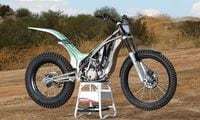
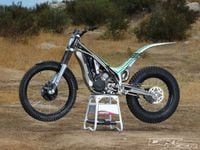
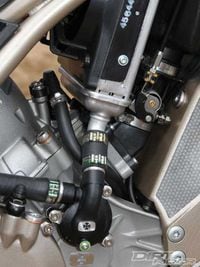
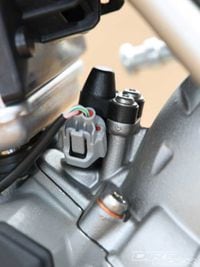
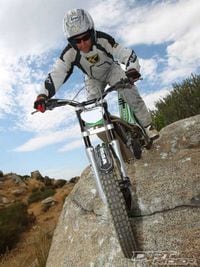
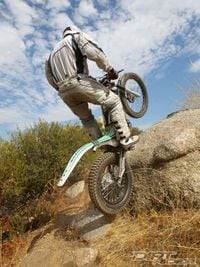
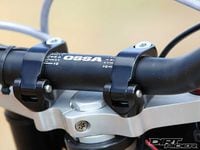
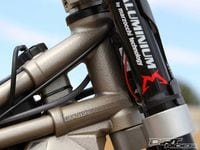
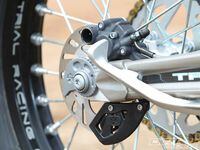
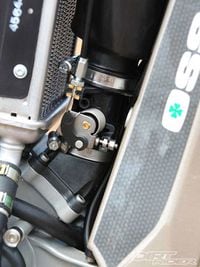
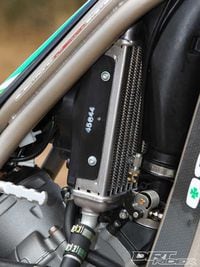
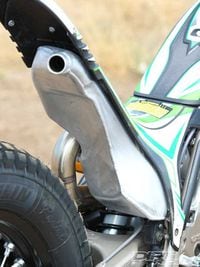
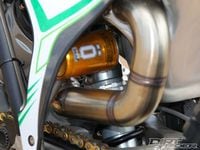
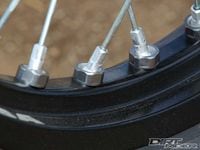
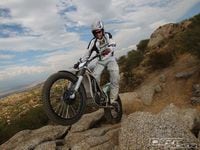
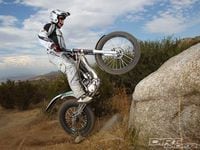
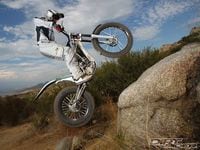
/cloudfront-us-east-1.images.arcpublishing.com/octane/XQORS527YFFT3MVI326EOEYJUI.jpg)
/cloudfront-us-east-1.images.arcpublishing.com/octane/TVDPP3TGMZHODFXASIFUM2KD34.jpg)
/cloudfront-us-east-1.images.arcpublishing.com/octane/EWDMR3DDTBBQPI7DQVZCLMRFAE.jpg)
/cloudfront-us-east-1.images.arcpublishing.com/octane/4XHHLVOUKFE3PDSWNSV4JJMGOE.jpg)
/cloudfront-us-east-1.images.arcpublishing.com/octane/5RLI3NQKQJA3LKKCQHRXQFTL6Q.jpg)
/cloudfront-us-east-1.images.arcpublishing.com/octane/3QCYJCI2RNBENIRWAKEOEKHFUM.jpg)
/cloudfront-us-east-1.images.arcpublishing.com/octane/UZHF7KAE7BFN7KU734ER7PPP3Q.jpg)
/cloudfront-us-east-1.images.arcpublishing.com/octane/XJFFFMRN6VEZ7CDNAGKWVPC3H4.jpg)
/cloudfront-us-east-1.images.arcpublishing.com/octane/RMC3CHWSHFAUJA2WJ2FVG4NBOA.jpg)
/cloudfront-us-east-1.images.arcpublishing.com/octane/WXEZV4WAYBERFKSRE5M7GQBW7A.jpg)
/cloudfront-us-east-1.images.arcpublishing.com/octane/LO3PZVGICFGJZBNUA2ORUSAUSE.jpg)
/cloudfront-us-east-1.images.arcpublishing.com/octane/UFHLTNOXLVARVLZV32M6ZJZV4Y.jpg)
/cloudfront-us-east-1.images.arcpublishing.com/octane/CTSWNU7SNNCC3LWB2KATYZ5AXY.jpg)
/cloudfront-us-east-1.images.arcpublishing.com/octane/IBNGAQWHJJF4TKSIQT54MTWRYQ.jpg)
/cloudfront-us-east-1.images.arcpublishing.com/octane/EAEWHFARGVGHFH4N4BDOSNBJSU.jpg)
/cloudfront-us-east-1.images.arcpublishing.com/octane/AZ7H35TQSZDKZCVM4S6CHERQEU.jpg)
/cloudfront-us-east-1.images.arcpublishing.com/octane/GYMIU7SMN5CWHP6QLFR6MVKEBU.jpg)
/cloudfront-us-east-1.images.arcpublishing.com/octane/B3CX7C4BFFCKBLDWHPQFACBH2E.jpg)
/cloudfront-us-east-1.images.arcpublishing.com/octane/6EIBG7NN4BH4FKDBCPCTLQL6FU.jpg)
/cloudfront-us-east-1.images.arcpublishing.com/octane/3RBI4ZG5NNBCTEUK7MWMKVZ5BE.jpg)
/cloudfront-us-east-1.images.arcpublishing.com/octane/3QKLYI2BWVAMRNNFC5KCGUYRAU.jpg)
/cloudfront-us-east-1.images.arcpublishing.com/octane/B7ITEVP2MRGLXM37KQURRKCG3E.jpg)
/cloudfront-us-east-1.images.arcpublishing.com/octane/BMDGOMSLGFF7XDLBL5DVCTON6Y.jpg)
/cloudfront-us-east-1.images.arcpublishing.com/octane/AEPPASNAAJGXVLAXAH5RF3BDNY.jpg)